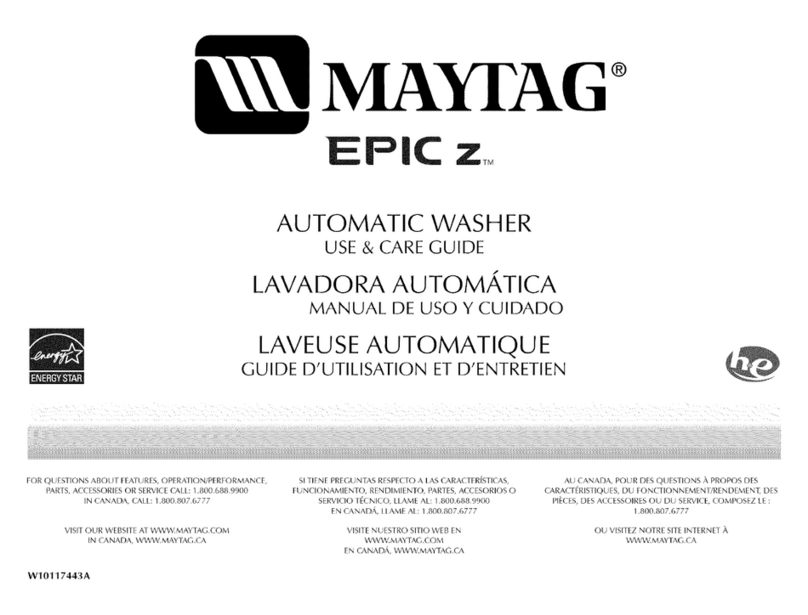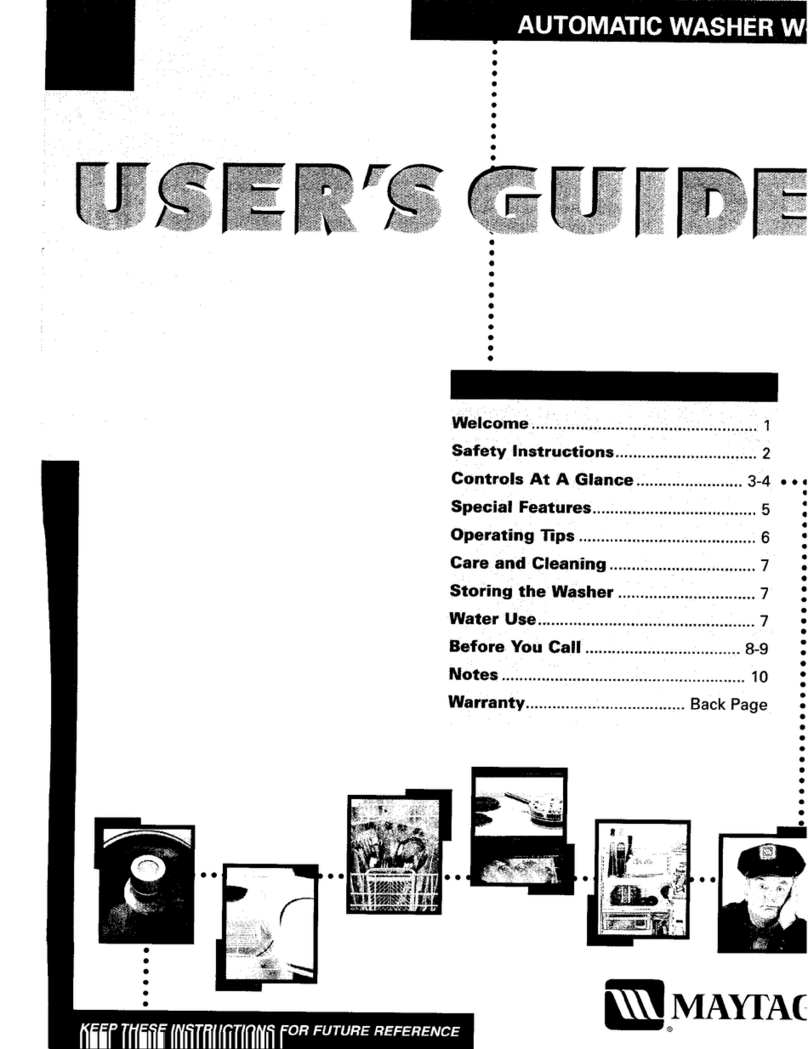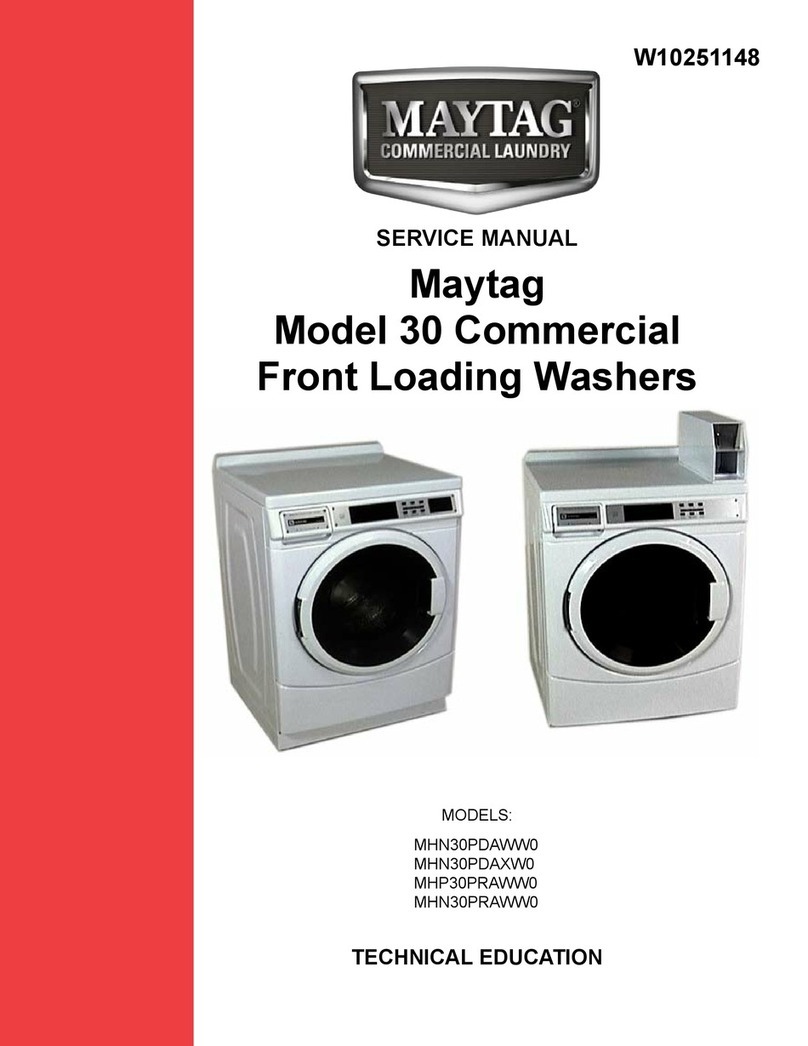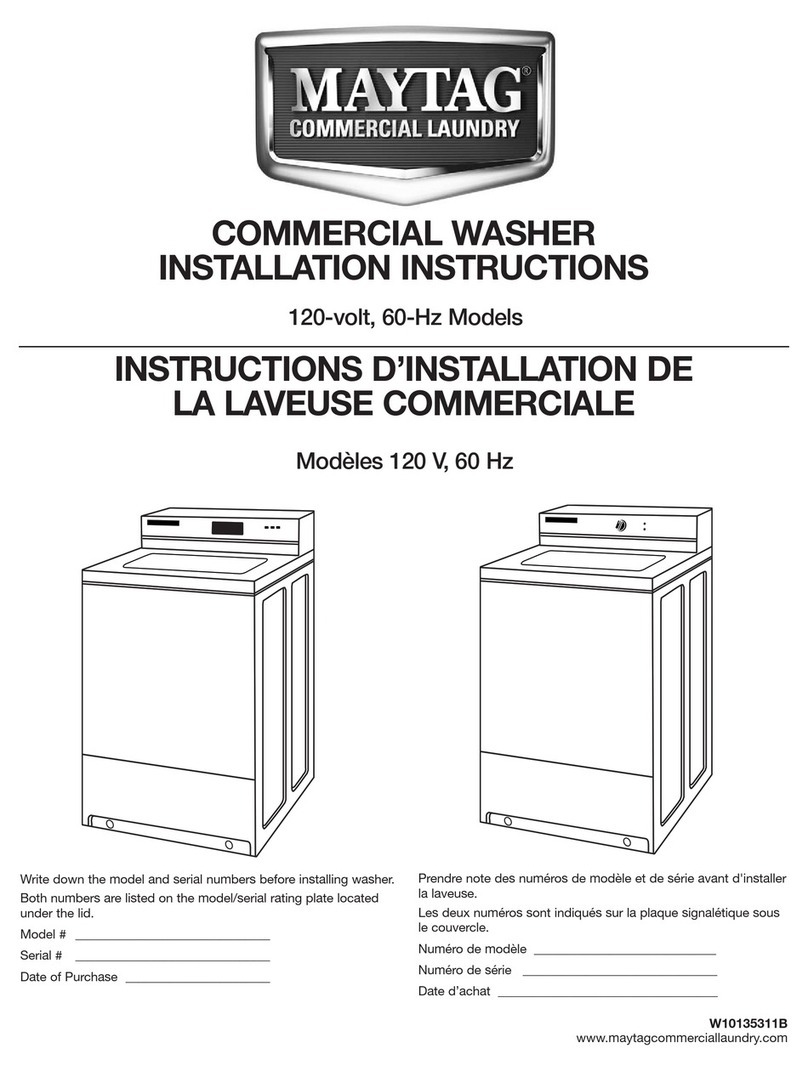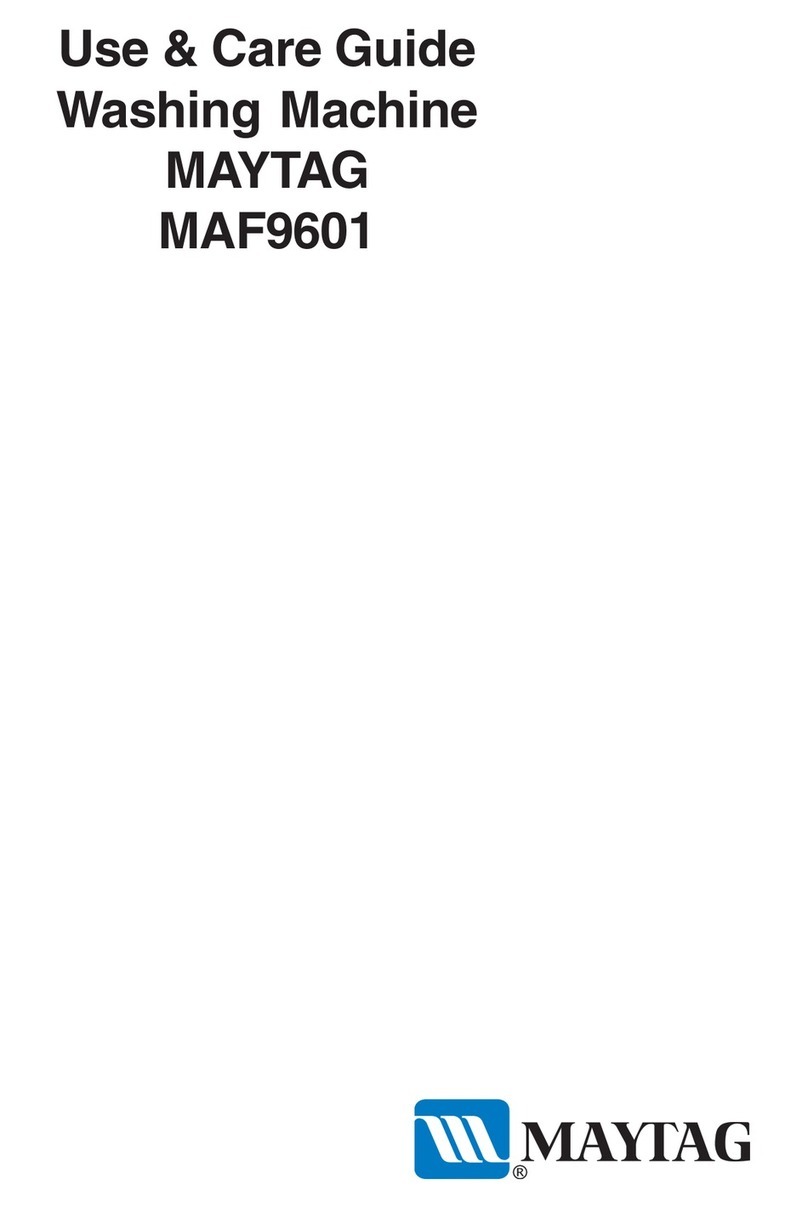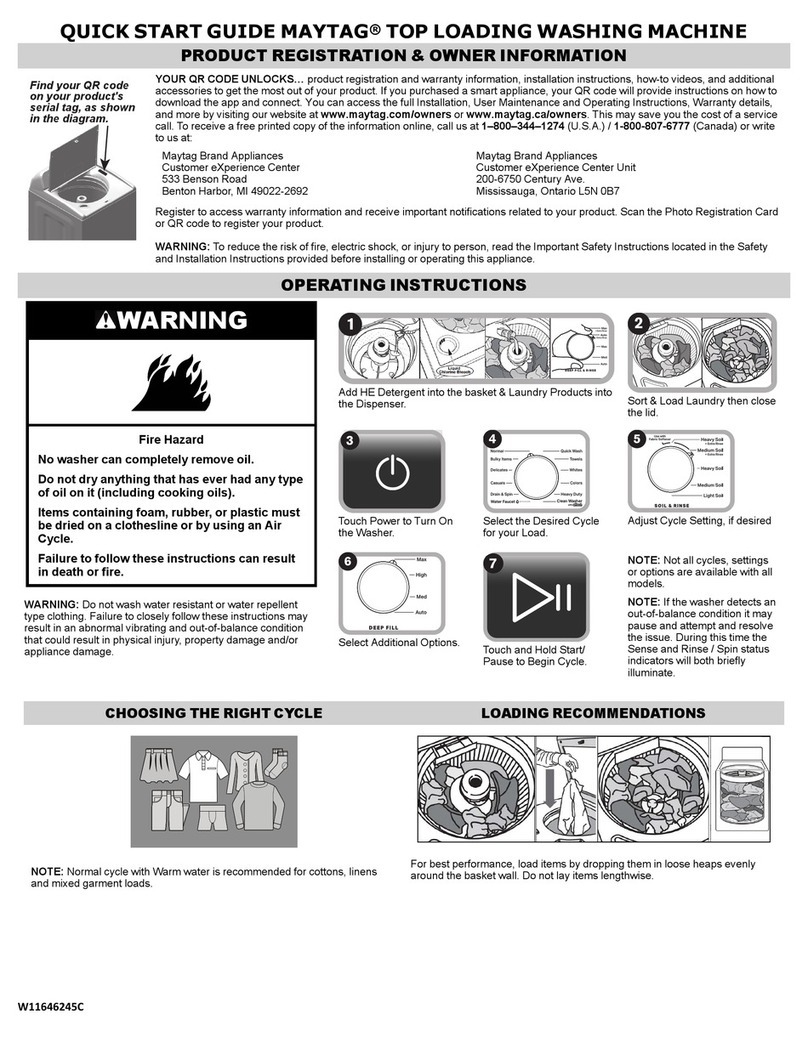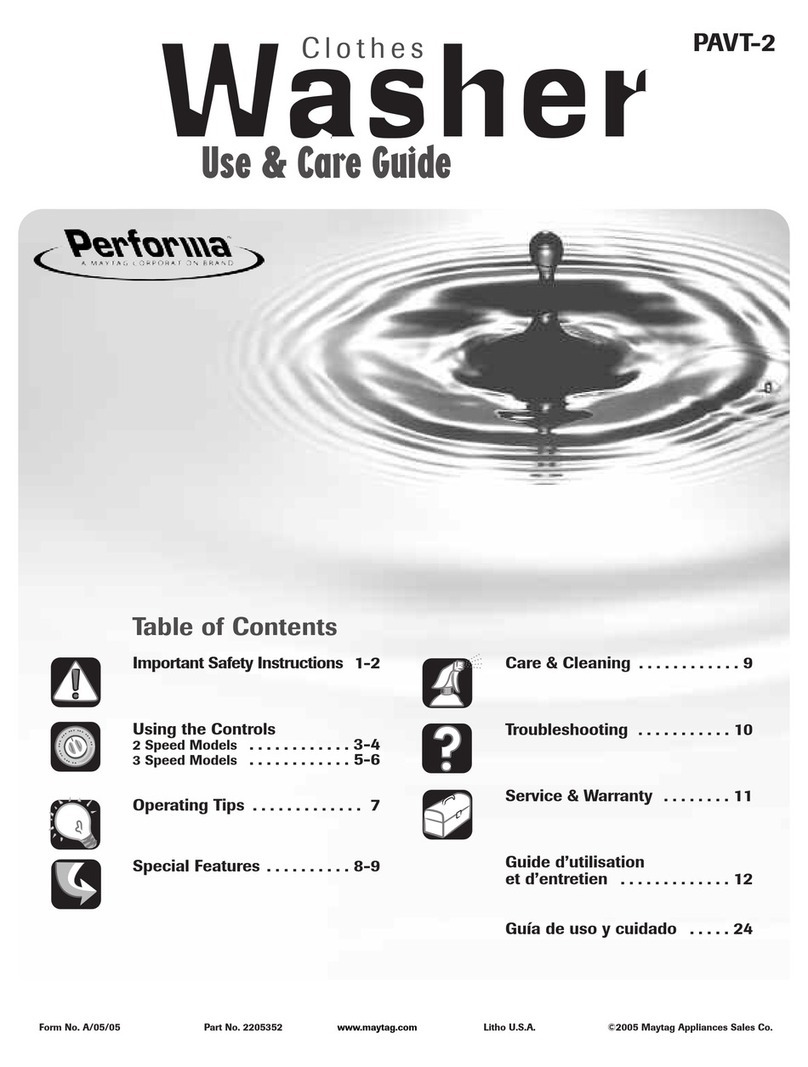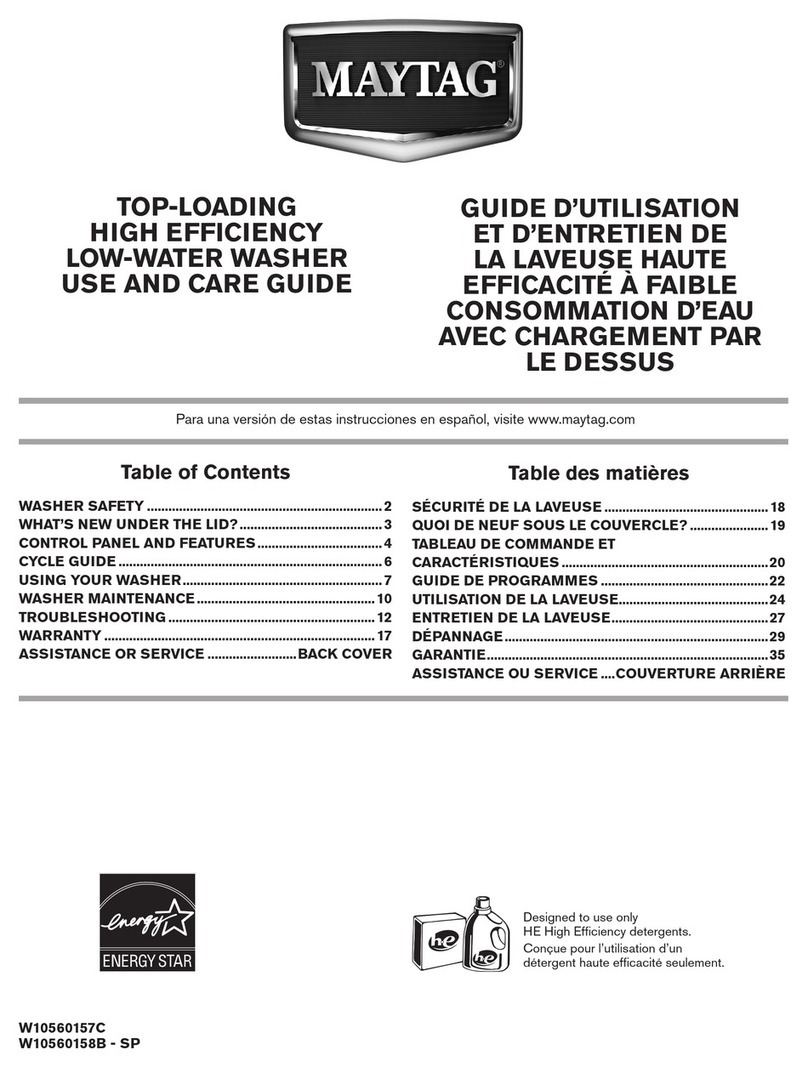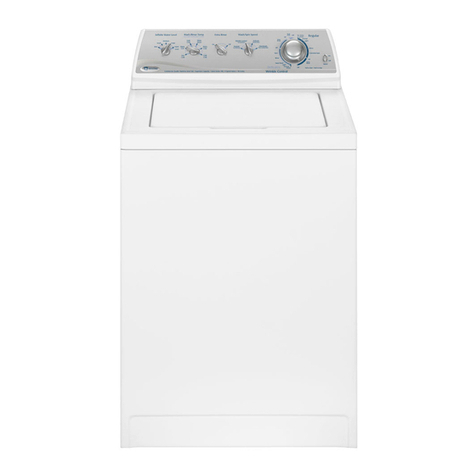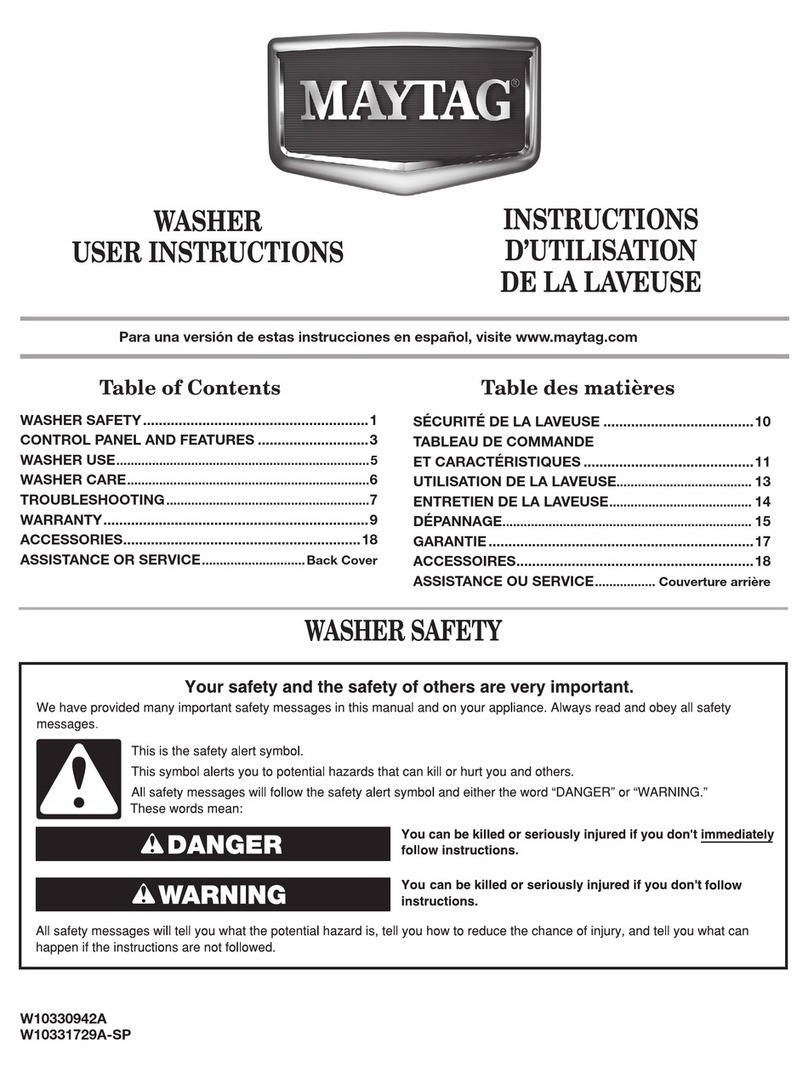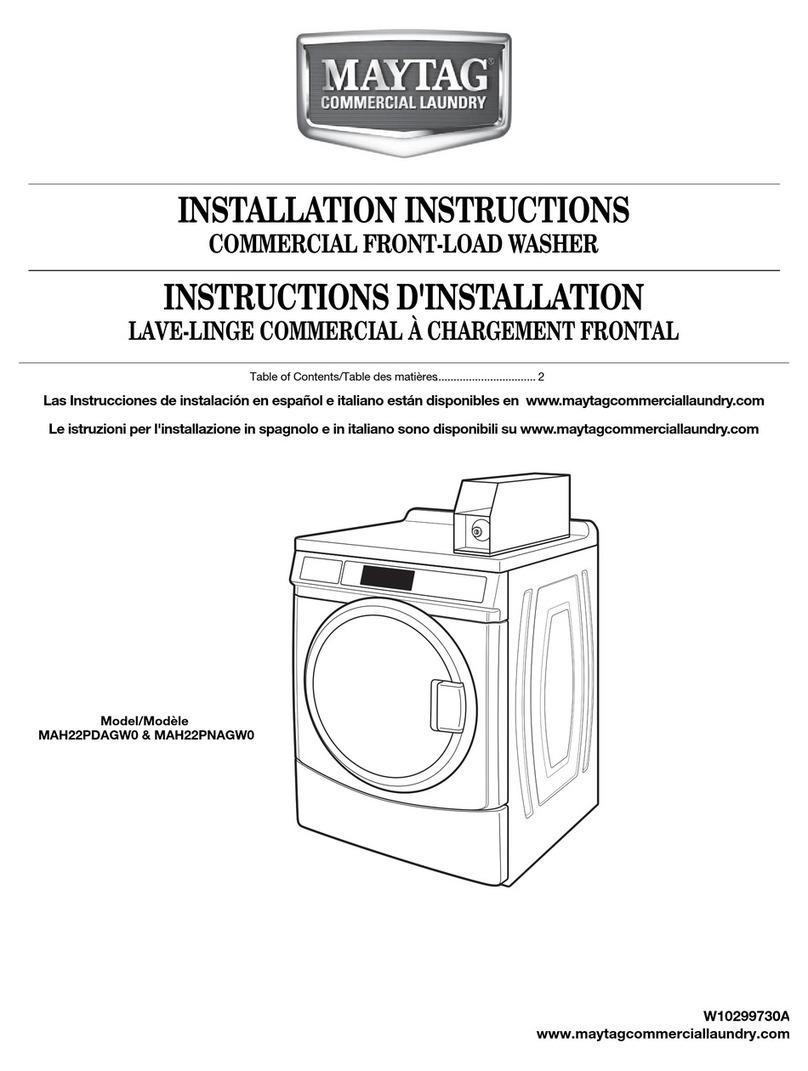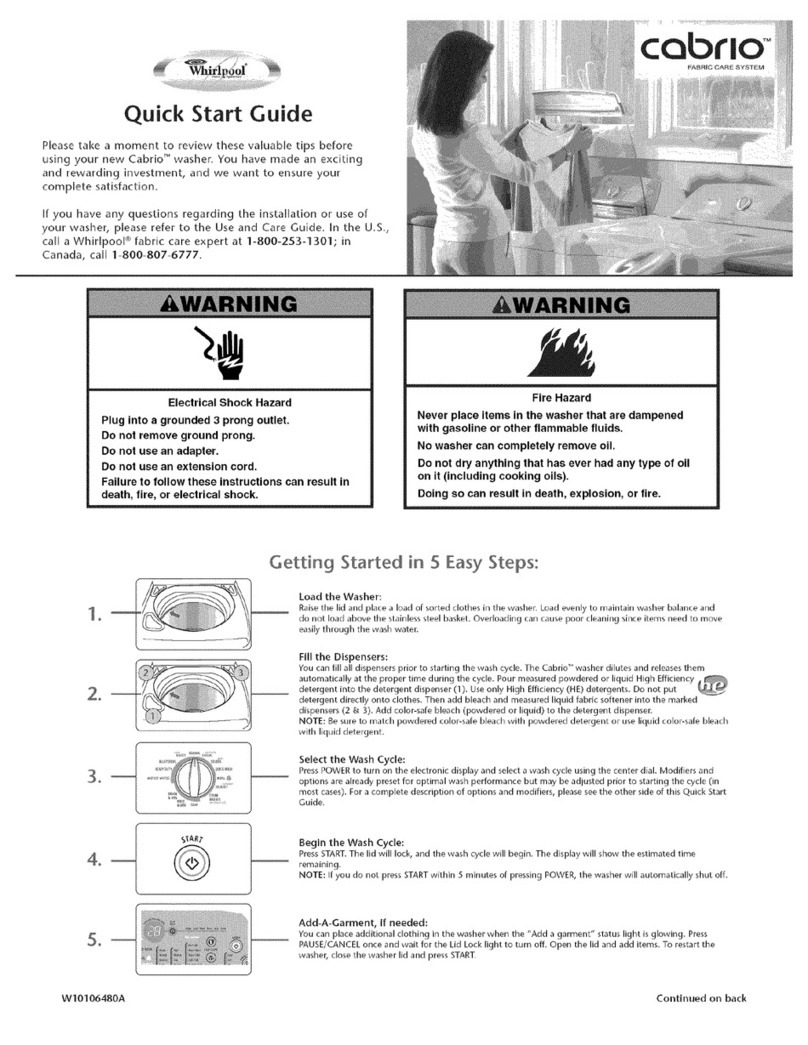Important Safety Instructions
WARNING: To reduce the risk of fire, explosion, electric shock, or personal injury when us
your washer, follow basic safety precautions, including the following:
1. Read all instructions carefully before using the washer. 9. When moving, have the washer checked and pro
Retain all instructions for future reference, installed by a qualified technician.
2. Properly install and locate in accordance with the 10. Inlet hoses are subject to damage and deterioration
Installation Instructions. time. Check the hoses periodically for bulges, kinks,
Must be properly grounded-See Installation Instructions. wear or leaks and replace them every five years.
Should anyone get an electric shock from the washer, dis- WARNING!FIRE HAZARD
connect electrical power. Do not operate until it has been
repaired by a qualified service technician.
Install or store where it will not be exposed to tempera- Do not add gasoline, dry-cleaning solvents, or other fl
tures below freezing or exposed to the weather, mable or explosive substances to the wash water. Tt
Connect to a properly rated, protected and sized power substances give off vapors that could ignite or explo,
supply circuit. See Electrical Requirements. Do not wash articles which have been previously cleaI
Connect to adequate plumbing and drain facilities, washed, soaked, or spotted with gasoline, dry-clear
Have a qualified service technician install your washer, solvents, oil, waxes, chemical solvents, alcohol, turf
tine, or other flammable or explosive materials. Tt
3. To prevent injury to children: substances will be retained in articles, and articles wt
Do not allow children to play inside, on, or with the wash- still contain these flammable or explosive substar
er. give off vapors that could ignite or explode.
Close supervision of children is necessary when using the Observe these precautions when using cleaning flu
washer, spot or stain removers, etc. These products should
When children are mature enough, instruct them in the labeled "nonflammable." Use according to manufac
safe, correct use of the washer, ers directions in a well ventilated area or outdo
Keep all laundry aids out of the reach of children, prefer- Thoroughly rinse articles by hand before placing then
ably in a locked cabinet. Use laundry aids only as direct- the washer. Some of these products - rust removers
ed by the manufacturer observing all warnings on con- example- will damage components and the finish of
tainer labels, washer.
Destroy the carton and plastic bags after unpacking the Keep area around and underneath washer free from
washer. Cartons covered with rugs, bedspreads, or plastic
sheet can create a chamber with inadequate ventilation, accumulation of combustible materials, such as ]
paper, rags, gasoline, and all other flammable va F
Remove the door to the washing compartment before the
washer is removed from service or discarded, and liquids.
HYDROGEN GAS IS EXPLOSIVE!Under certain cot
4. Do not reach into the washer if the tub or agitator is mov- tions, hydrogen gas may be produced in a hot water _,
ing. The washer is equipped with a safety switch for your tern that has not been used for two weeks or more. If
protection. If action does not stop when the washer lid is
opened during the spin cycle, disconnect the electrical hot water system has not been used for such a peri
power to the washer. Do not operate the washer until it before using the washer, turn on all the hot water fau(
has been repaired by a qualified technician, and let the water flow from each faucet for several
utes. This will release any accumulated hydrogen
5. Do not tamper with the operating controls. As this gas is flammable, do not smoke or use an o1
6. To prevent personal injury and damage to the washer, do flame during this procedure.
not repair or replace any part of the washer or attempt Recent studies have shown that if vegetable oil conta
any servicing. Servicing should be referred to a qualified nated materials are incompletely washed, a carry-o
service technician, and buildup of the oil may contribute to a chemical rc
7. Do not wash fiberglass articles unless recommended by tion (spontaneous combustion) that could cause a loa(
manufacturer, catch fire by itself. This would be more likely to hapl
8. Flame resistant finishes - improper laundering could if the load were left in the dryer after tumbling stopt
remove them. Follow garment manufacturer's instruc- or if items were folded and stacked while warm.
tions carefully.
1SAVE THESE INSTRUCTIONS
